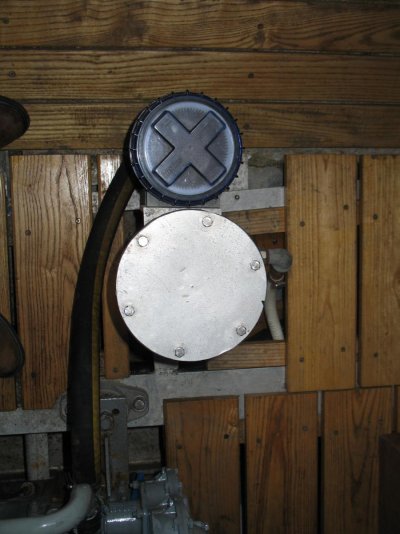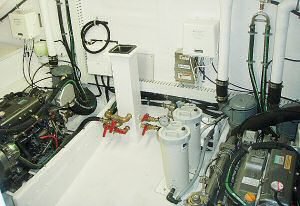I think a twin engine applications might be more favorable for a sea-chest, as it can be mounted low in the hull and at center. Full center keels might not prohibit them, but it would require mounting them on one side or the other. I considered doing one on my own boat when it was time to change-out some thru-hulls, but with the full keel and only 3'2" draft at the bottom of the keel, it would be drawing from maybe 2.5 ft. below the waterline. When she's rolling, with multiple sources drawing water at the same time, she'd be sucking in whatever crud, grass, suds or plastic that was near the surface.
Great Harbour's have a great setup, even with only 2'10'' draft.
The sea-chest is mounted dead center at the deepest part of the hull between the engines.



